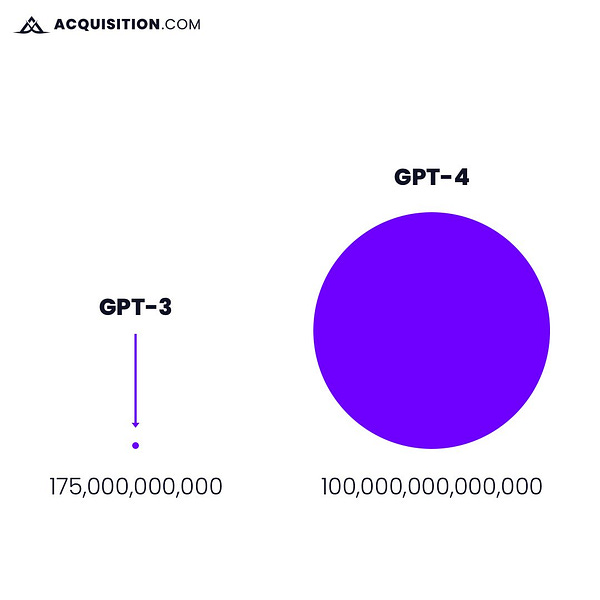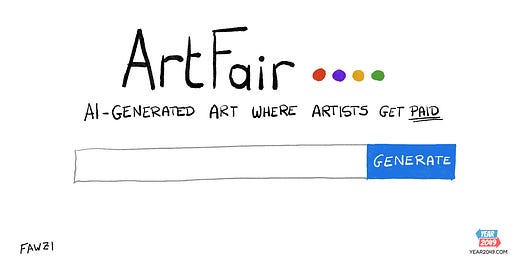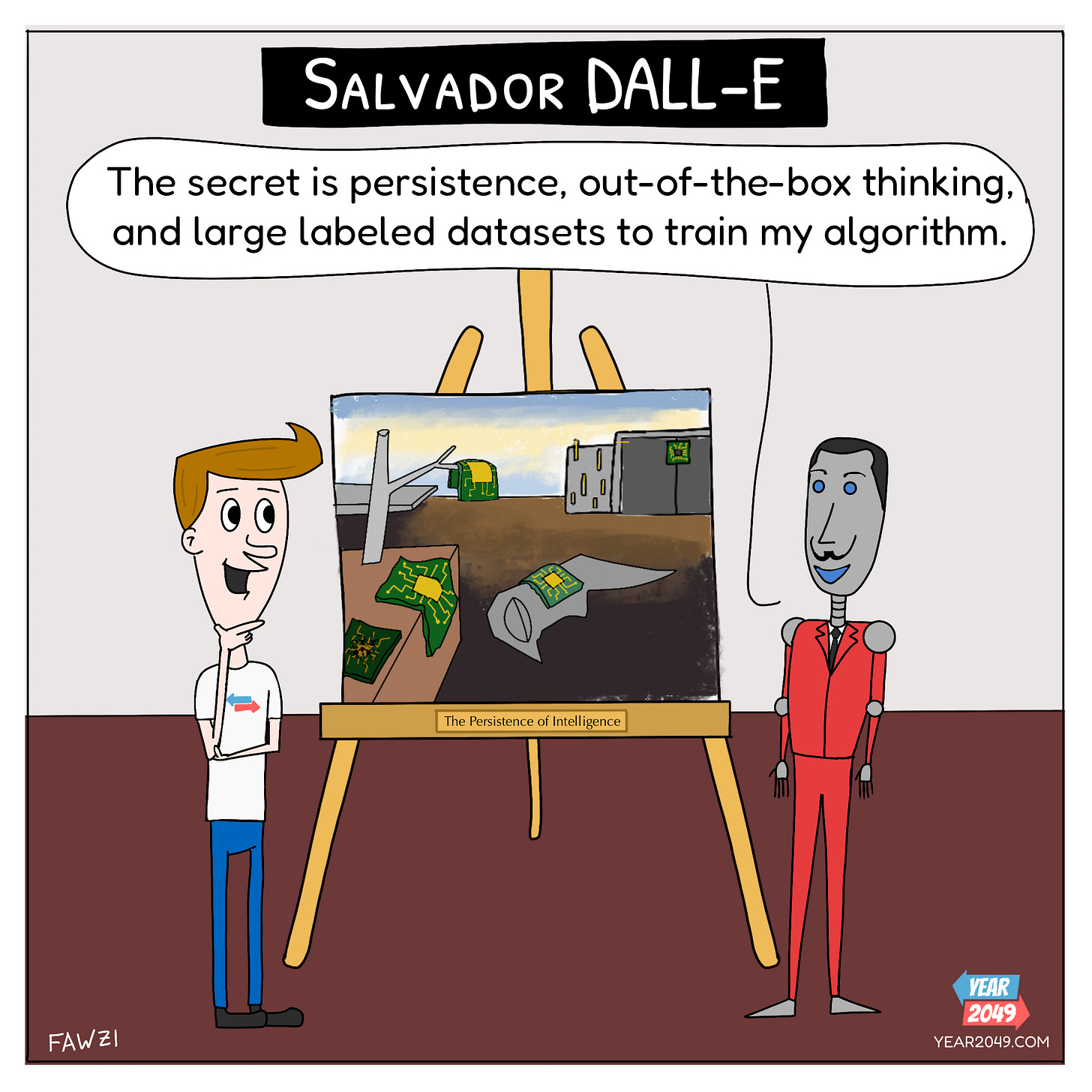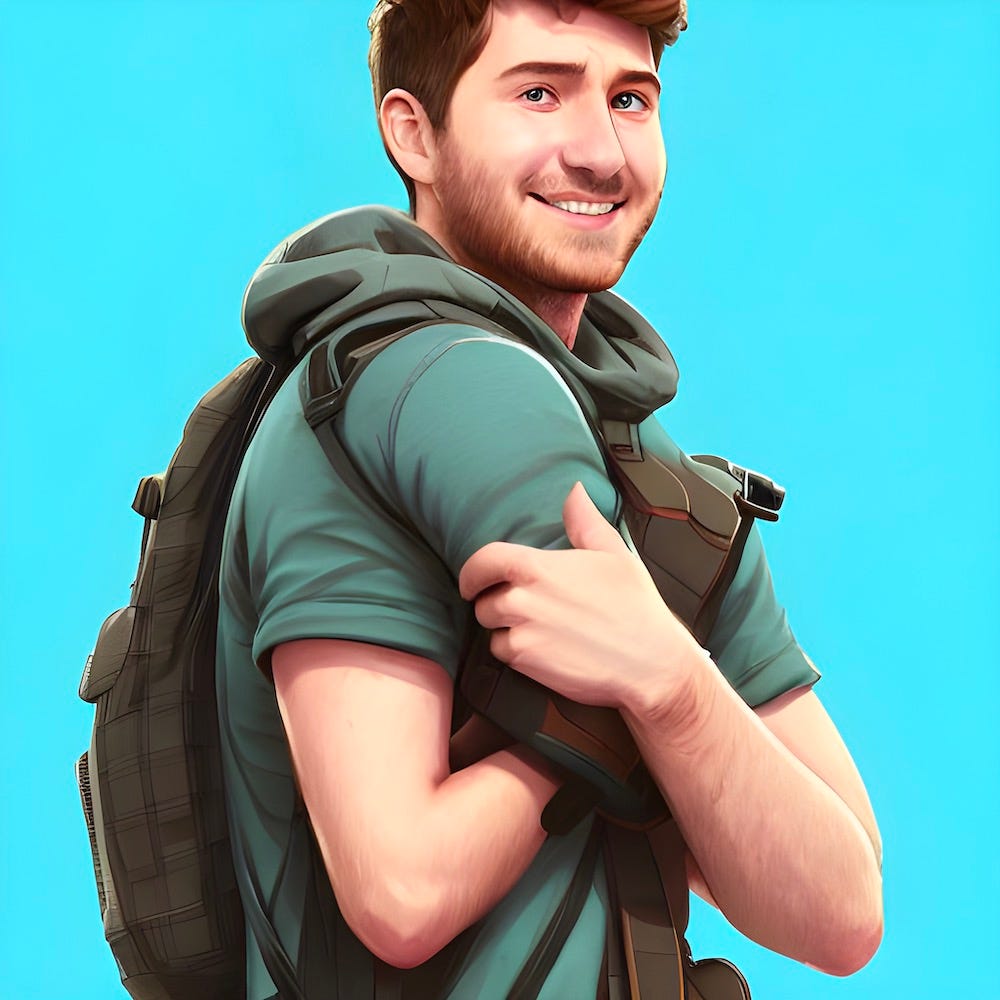What if… AI tools paid artists?
AI art tools should pay artists, but it's more complicated than we think.
Welcome back to Year 2049, the weekly newsletter exploring how technology and design shape the future. It covers AI, sustainability, cities, and more topics.
It’s read by designers, engineers, entrepreneurs, VCs, and policymakers. To receive a new story in your inbox every Friday, you can subscribe for free below:
The wild west of AI-generated art
It’s been less than a year since DALLE•2 was released and blew our minds away with the variety of art it could generate from a simple yet descriptive prompt. Other tools like Midjourney and Stable Diffusion quickly followed.
The initial stages of excitement were quickly replaced by concerns about the inventiveness of AI-generated art. Were these AI systems creating original art? Or were they copying other artists?
Artists’ concerns over the past year materialized into a class action lawsuit filed against Midjourney, Stability AI, and DeviantArt last week. The suit alleges copyright infringement, unfair competition, breach of terms of service, and more.
I’m not a legal expert, so I can’t weigh in on each of these claims.
Technically, these AI tools generate new images, pixel by pixel, every time someone uses them. But the problem is that these models were trained on datasets containing images and art found online without artists’ consent.
For example, Midjourney and Stable Diffusion were trained on a dataset with 5 billion images containing work from artists without their permission.
Some argue that AI isn’t copying and is only learning. But these tools return impressive results because they were trained on a wealth of prior art. And because these tools are paid and generate revenue, artists’ work has created undeniable financial value for these AI tools, which is why artists should be compensated.
I have some ideas to make that possible. Perfect solutions don’t exist, but I hope this creates a discussion regarding the future of AI-generated art. Once you’re done reading, share your thoughts in the comments.
Introducing: ArtFair
To present my ideas, I’ll describe them using a fictional AI image generator called ArtFair.
Let’s start from the beginning: training the AI model behind ArtFair.
Unlike other AI art tools, ArtFair will pay artists a one-time licensing fee for each image they use to train the model. This will be an expensive upfront cost for ArtFair, but it’ll create an incentive for all artists to sell their art to them. And it benefits both parties:
Artists can make money from the portfolio of art they’ve built over their careers, which no longer generates income for them.
ArtFair will have the legal right to use the images without worrying about lawsuits that could lead to hefty legal fees, settlements, and/or fines.
How ArtFair and artists will make money
ArtFair will generate revenue by selling credits to users, just like current tools. To keep things simple, let’s assume:
1 credit = 1 image
10 credits = $1
So, if I wanted 10 AI-generated images, I would pay $1.
Here’s where it gets interesting, and I’ll give YouTube all the credit for inspiring me.
Why YouTube’s business model works
YouTube shares its ad revenue with its creators: YouTube keeps 45%, and creators get the remaining 55%.
YouTube does this because it knows the value of the platform depends on its creators and their content:
Sharing 55% of ad revenue incentivizes creators to stay on YouTube, create more videos, and build a large audience.
As YouTubers make content over the years, their audience grows, attracting more advertisers.
More advertisers lead to more ad revenue for YouTube and its creators.
YouTube’s business model creates a positive growth loop that rewards both the platform and its creators.
ArtFair’s revenue share
ArtFair will follow a similar revenue share: revenue from credits will be split 50/50 between the platform and its artists. The 50% for artists will be distributed based on how much art they contributed to training ArtFair’s AI.
For example, if Samantha contributed 30 images to train the model and George only contributed 5, she would get a higher share of the revenue from credits sold on ArtFair. This incentivizes artists to sell more art to the platform since they will be rewarded accordingly.
This creates another positive growth loop that benefits both ArtFair and artists:
Artists get paid a one-time fee for images they contribute to ArtFair’s training dataset and receive additional royalties based on how much art they contributed.
ArtFair uses those images to train and improve its AI image generator, attracting more users who will become loyal to the platform.
Attracting more users leads to more credits being sold, giving ArtFair and artists more money.
One more thing...
I’ve proposed a way to align the incentives between ArtFair and artists, but there’s one more opportunity.
AI-generated art doesn’t always look great, but it can be a starting point for getting ideas on the art we need. Some people will want higher quality art or a more consistent look across multiple images they generate.
Here’s a portrait I generated using AI. I love everything about it, like the colours and art style, but the extra shoulder ruins it:
Imagine you wanted to create an illustrated children’s book. You could use ArtFair to generate your initial concepts, ideas, and storyboards for the book you want to create.
ArtFair could then provide recommendations of artists that match your desired art style. This is possible since each image that ArtFair is trained on is associated with a specific artist, who will have a profile on the platform.
You could contact the artist and send them all the rough AI-generated art you created for your book. The artist would use your rough art as a guide to create the polished art you want with all the details you need: characters, scenes, colours, and style.
So, ArtFair can become a source of passive income for artists (through the 50/50 revenue share from credits) and a lead-generation tool to find clients willing to pay for higher-quality, professional art.
Challenges: where ArtFair falls short
Everything I’ve said so far painted an idealistic version of how an AI tool like ArtFair could pay artists for their work.
But, it’s important to highlight the challenges and complexities of such an approach:
#1: The challenge of licensing images for training
Midjourney and Stable Diffusion were trained on 5 billion images.
Even if ArtFair only had to pay for a fraction of those images, the bill would be huge. I don’t doubt that big tech companies and VC-backed startups can find the money to do so.
AI art tools are here to stay, and they’re already becoming a staple of our online toolkit. This significant upfront investment will be worth the payoff as the industry consolidates in upcoming years.
The other side of the coin is that artists may need to sell themselves short to contribute to ArtFair’s training dataset.
#2: The potential mismatch between value and demand
I mentioned that ArtFair would distribute 50% of the revenue it generated from credits. Each artist would get a sum based on how many images they contributed to training ArtFair’s AI.
But, the flaw in this approach is that images with different art styles have different values. For example, 3D art might be a more popular category on ArtFair than oil paintings.
Using the Samantha and George example again, assume:
Samantha contributed 30 images of her oil paintings
George contributed 5 images of his 3D art
The 3D art style is significantly more in demand on ArtFair than oil paintings, which generates more revenue from credits
So, shouldn’t George get a higher share of returns because he contributed to a higher-demand category?
Final thoughts
I admit that the idea behind ArtFair is optimistic and idealistic. Whether a platform like it will ever exist will depend on the outcome of the lawsuits we’re seeing today. If AI tools avoid penalties or repercussions, they’ll keep doing what they’re doing.
But, if they lose the case, a tool like ArtFair won’t be out of the question.
Or… these companies will hire “art farms” according to someone in the industry who commented on one of my recent videos:
Oh well… 🙃
Thanks for reading Year 2049! This is a free newsletter, and the best way to support my work is by becoming a free subscriber.
If you’re already subscribed, you can support me by sharing this story with your family/friend group chats, or your Slack channels at work.
Other stuff
Article: Beware of GPT-4 misinformation
If you’ve spent any time online in the past month, you’ve probably seen this visual comparing GPT-3 (which powers ChatGPT) and GPT-4:


This is a false rumour. It has been denied by Sam Altman, OpenAI’s CEO, multiple times since September 2021. It’s creating unnecessary hype or fear, so please take any rumours or news about unreleased technology with a grain of salt while you’re online.
Thank you to
for calling this out in his recent post on .Video: Aptera unveils its solar-powered, production-intent EV
I recently talked about Aptera’s unique design elements compared to other EVs. This week, they unveiled their final design for their production vehicles, following the multiple prototype iterations they showed over the past few years.












Love this concept. ✨
Nice article Fawzi. I came to a similar conclusion a while back in a piece I wrote, but you've fleshed it out in a lot more detail here. Great to see :)
"I think the only truly ethical way forward for AI-imagery, is to create an open training data set that people have to explicitly opt-in to. The financial side would need to be worked out, but perhaps there are small payments for initially submitting images to be used in training data, and maybe some kind of royalties system based on prompts that explicitly use artists names (and much, much higher royalties for anything used in commercial work)? This could be scaled with some kind of CC-BY type license that is explicitly for use in AI training data, exposed through image metadata somehow."
https://clipcontent.substack.com/p/the-ai-art-debate-excitement-fear